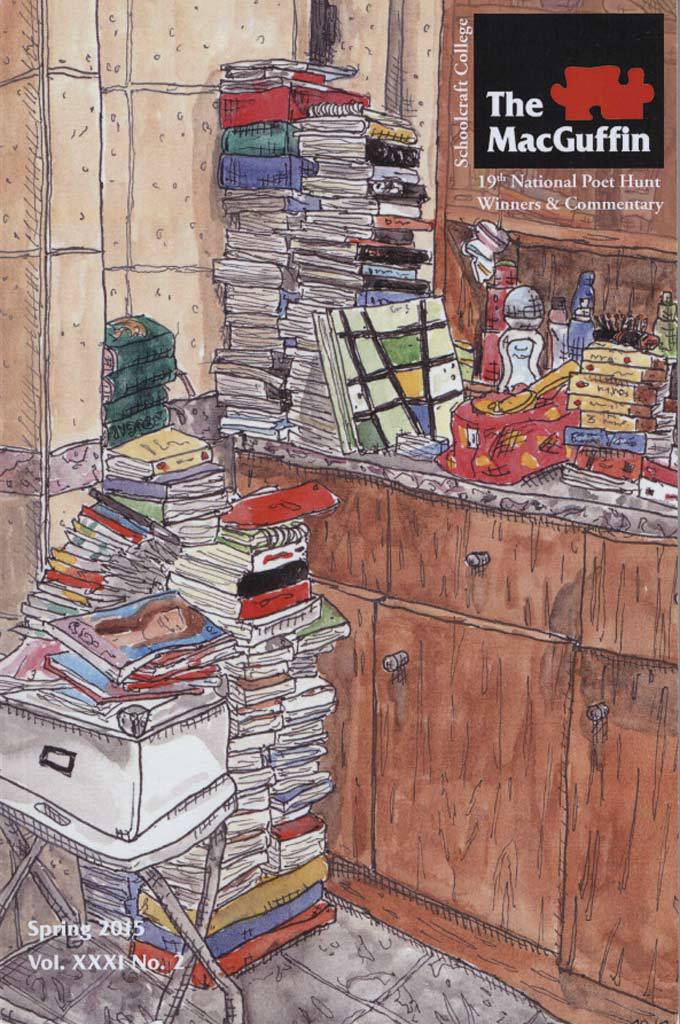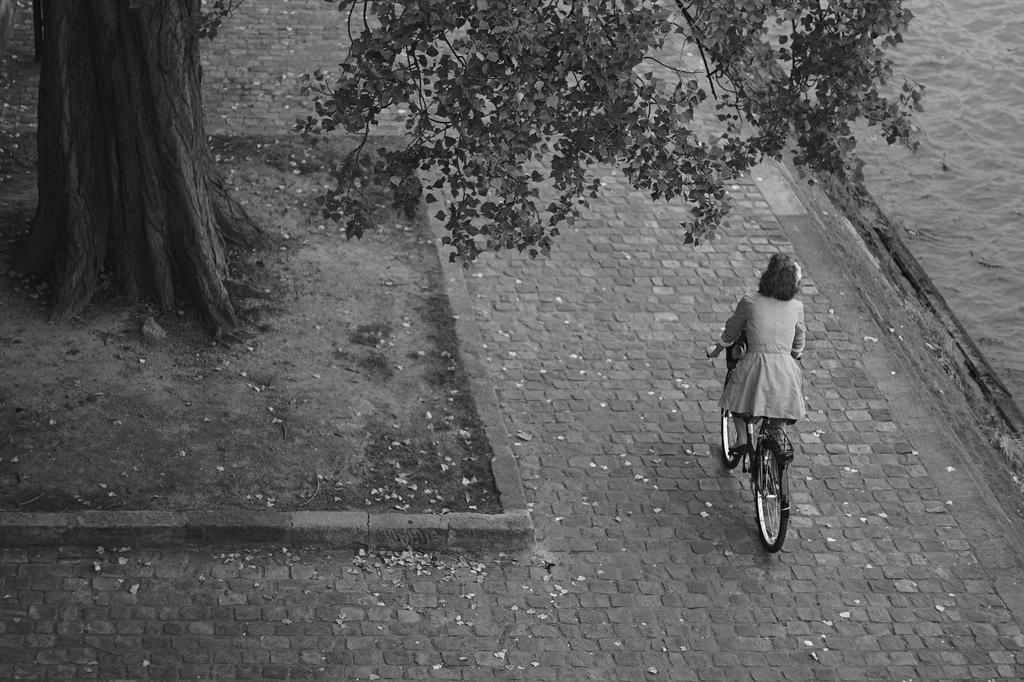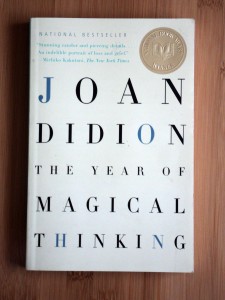 I have a new nonfiction story in the Spring 2015 issue of The MacGuffin literary journal titled Fin de Siècle. It is a memoir piece about growing up in Bridgewater, Mass., in the 1970s. You can order a copy at the NewPages Magazine Webstore.
I have a new nonfiction story in the Spring 2015 issue of The MacGuffin literary journal titled Fin de Siècle. It is a memoir piece about growing up in Bridgewater, Mass., in the 1970s. You can order a copy at the NewPages Magazine Webstore.
Tag: memoir
The French have the peculiar habit of referring to American and Brits collectively as “Anglo Saxons,” which isn’t exactly a racial or cultural description, but more a way of classifying a people oddly attached in their estimation to both hyper-commerce and 17th Century modes of Puritanism.
To make matters worse, we Anglophones fail to observe the most elemental rules of civilization, like saying Bon jour Madam/Monsieur when entering a French place-of-business or using the magic words s’il vous plait and merci. We continue to wander around Paris clueless that France is a country where social formalities matter, and it is inconceivable to the locals that grownups (even those reared in a country where the French language is about as esteemed as Sanskrit) can be ignorant of such common courtesy.
In the publishing industry, the Anglo-French clash-of-cultures has become something of a book genre unto itself. American and British writers explaining France to us—while chronicling both the joys and horrors of living and working with the French—is well-worn territory. From the tome-like sociological study The French by Theodore Zeldin (1997) to the delicious New Yorker essays of Adam Gopnik collected in Paris to the Moon (2001), and a glob of memoirs chronicling love affairs in the city of lights, such as Almost French: Love and a New Life in Paris (2004) by Sarah Turnbull (an Australian writer), many of us cannot get enough of the French.
As a self-identified Francophile, any book subtitled A Memoir of an Outsider in Paris, naturally catches my eye. We Francophiles are like Civil War buffs who never tire of another recounting of the Battle of Vicksburg or even another Lincoln biography. Yet Stephanie LaCava’s memoir An Extraordinary Theory of Objects, isn’t in this vein. She has no interest in deciphering the French for us; instead, she tries to do something far more ambitious, and rarer: to reveal the syntax of an internal life, which in her case, is mediated through a lifetime of objects.
In the spring of 1993, at the age of 12, LaCava’s father moved her family from New York to Le Vésinet, France for work. Her parents enrolled her in an international school. She struggled to connect both to her peers and her new French life. Her social dislocation led to depression, and at the age of 13 she “falls apart,” an experience that naturally marks her sensitive nature for life. But what makes this memoir unusual, is how LaCava tells her story via a catalog of metaphysical connections to various objects. LaCava writes: “I traffic the world using my idiosyncratic senses, so it follows that I’d document my life through a narrative illuminated with objects and their respective stories.”
Through this peculiar narrative of objects, we meet someone who is almost pious-like in her devotions. “I was obsessed with relics and reliquaries,” she writes. “The ideas that part of an ancient body or blood could be housed in a beautiful, little monument for future pilgrims.” And it is in this infusion of the spiritual and emotional onto these objects, and her reflection on their legacies and cultural histories, that illuminate her internal life for us. A sampling of these objects include a Skelton key, a curved whale’s tooth, tea bags, antique jewelry, Kurt Cobain’s ratty Cardigan from Nirvana’s famed 1994 MTV “Unplugged in New York” performance, and a dodo bird, to name just a few. LaCava introduces these objects with Infinite Jest-like footnotes at the bottom of the page (along with illustrations). And while some readers might experience these footnotes as an interruption to the narrative, it’s important to understand them as essential to LaCava’s aim, just as one must embrace the repetition of musical themes in the work of Philip Glass, for example, or the endless “digressions” in Proust because they constitute the architecture of the work, the post and beams if you will.
*
In 1958 New York Philharmonic music director Leonard Bernstein, in his first “Young People’s Concert” titled What Does Music Mean?, tried to dispel the popular notion that classical music was some stuffy business that required a PhD to appreciate. He informed the assembled children in Carnegie Hall and a national TV audience that:
“No matter what stories people tell you about what music means, forget them. Stories are not what music means. Music just is. It’s a lot of beautiful notes and sounds put together so well that we get pleasure out of hearing them.”
I can’t guess what LaCava would think of Bernstein’s assertion vis-à-vis music, but I suspect that when it comes to objects (a word that doesn’t seem sufficient for our subject here), she would have to disagree with el maestro. And while Bernstein might have asserted there is no inherent meaning attached to Cobain’s Cardigan or a pale nude slip designed by Helmut Lang either, it is that stuff’s intersection with our lives—and the subsequent stories—that infuses them with personal meaning.
Bernstein played a section that afternoon from Rossini’s William Tell Overture, and he asked the children what came to mind. Without hesitation they screamed out “cowboys and Indians” because of their exposure to “The Lone Ranger” radio programs. Bernstein remarked that one could experience Rossini’s music fully and completely without every considering the American west. The music simply is, he explained, but could we say the same for that iconic Cardigan, if we’d never heard of Cobain?
In 2013 America, as hyper-materialism becomes the religion-of-choice, it’s hard for many to believe that there is soul in an object, let alone a human being. And so we have to ponder the legacy of that iconic mediator between consumer materialism and the spirit world, the late Steve Jobs, who gave this subject more than a bit of thought during his short life. In his recent biography of Jobs, Walter Isaacson writes that Jobs and Pixar animator John Lasseter shared a belief that “products have an essence to them, a purpose for which they were made. If the object were to have feelings, these would have to be based on its desire to fulfill its essence.”
Stephanie LaCava, thankfully, has a more personal and less self-interested take on the material world than Mr. Jobs. This is not Silicon Valley metaphysics or a lecture from a genius American musician, it’s a snapshot from an vibrant internal life. “As humans we crave beauty and we attempt to hold on to this experience through physical evidence,” writes LaCava. “For religion, it may be a relic, for the curious, a found talisman. For me, it is my story of conquering another world, place where in order to survive I needed to seek another world.”
I’m still on an Elif Batuman kick. I’ve been tracking down her essays online and I’m looking forward to reading The Possessed, which arrived in the mail yesterday. Batuman wrote a funny, blistering and brilliantly-argued essay in the London Review of Books in 2010 titled “Get a Real Degree” where she reviewed Mark McGurl’s history of MFA creative writing programs.
It isn’t entirely surprising that Batuman, who has a PhD from Stanford and is a Russian literature professor, is no cheerleader for programme fiction. What’s surprising is that Batuman writes with a sense of wit and style that must be the envy of many fiction writers.

![]() photo credit: JoeInSouthernCA
photo credit: JoeInSouthernCA
The following provides a sense of her flare as a reviewer as well as her skepticism about programme fiction:
“In technical terms, pretty much any MFA graduate leaves Stendhal in the dust. On the other hand, The Red and the Black is a book I actually want to read. This reflects, I believe, the counterintuitive but real disjuncture between good writing and good books.”
It is undeniable that contemporary “literary fiction” is now dominated by graduates of MFA programs; Batuman finds these books largely deficient:
“I think of myself as someone who prefers novels and stories to non-fiction; yet, for human interest, skillful storytelling, humor, and insightful reflection on the historical moment, I find the average episode of This American Life to be 99 per cent more reliable than the average new American work of literary fiction. The juxtaposition of personal narrative with the facts of the world and the facts of literature – the real work of the novel – is taking place today largely in memoirs and essays.”
Her long essay makes a number of interesting points; in no particular order, they are:
- Programme fiction has little “historical consciousness”
- Programme writers are obsessed with writing about persecution & the persecuted (sounds similar to Harold Bloom’s complaint about what he termed the “literature of grievance”)
- She challenges McGurl’s contention that until the advent of the GI Bill in the U.S., writers had generally forgone a university education
- The whole project of literature as a “means to social change” (à la Dave Eggers) is something she remains suspicious of
I was late to the party when it came to reading Joan Didion. For years I had the vague sensation that Didion wasn’t for me. It was one of those unapologetic prejudices people have for certain writers, a prejudice that ended when I picked up a copy of The Year of Magical Thinking. It was evident from the start why Didion was held in such high regard—she was good. And yet, because I’d read Magical Thinking and its meditation on her husband’s death, I decided to pass on Blue Nights, her new memoir about the death of her 39-year-old daughter.
If it’s a truism that a critic should always review the book in hand, and not the book they wish had been written, then I’ve eagerly crossed the line. My own “magical thinking” involved—not denying the death of writer John Gregory Dunne, as Didion initially did—but wishing that his death and her subsequent grief wasn’t the focus of the book. I found myself skimming over passages about the Beth Isreal ICU or long meditations on grief to find those where Didion recalls her marriage and life in Los Angeles in the 1960s and ‘70s.

![]() photo credit: softestthing
photo credit: softestthing
I wanted to hear about two writers living a blessed life of work and play in a California that no longer existed. I wanted it to be LA in 1971 when Didion wore oversized Rachael Zoe-like sunglasses and chain-smoked cigarettes as if they were elixirs. I wanted to go back before all the dying:
“One summer when we were living in Brentwood Park we fell into a pattern of stopping work at four in the afternoon, and going out to the pool. (John) would stand in the water reading (he reread Sophie’s Choice several times that summer, trying to see how it worked) while I worked in the garden….Just before five on those summer afternoons we would swim and then go into the library wrapped in towels to watch Tenko, a BBC series, then in syndication, about a number of satisfyingly predictable English women…..At seven or seven thirty we would go out to dinner, many night’s at Morton’s. Morton’s felt right that summer. There were always shrimp quesadilla, chicken with black beans.”
You get the idea. There are similar passages capturing life in Malibu and stays in Hawaii. It’s the writer’s life as well as the life of a marriage, rendered simply by a great writer.
“…many night’s at Morton’s. Morton’s felt right that summer.” What a beautiful line. It’s worth reading an entire book just to hit upon such a line.
Yet the book is not a memoir of marriage, but a book about death and loss. And in her confrontation with grief, Didion soldiers under a strict scorched-earth policy, burning down any hint of solace or false comfort in her way.
“Only the survivors of a death are truly left alone,” Didion writes, “The connections that made up their life—both the deep connections and the apparently (until they are broken) insignificant connections—have all vanished.”
After reading Magical Thinking I can only assume Blue Nights will be even more punishing. A recent review by writer Rachel Cusk in The Guardian confirms this suspicion:
“Didion’s strategy, or rather her instinct – the instinctive response to chaos – is to repeat herself. She struggles to revive the form and style of her earlier book, to make it live again; she repeats anecdotes, and often sentences, word for word; she creates repeating prose patterns whose effect, in the end, is to confer the author’s own numbness on the reader.”

![[Portrait of Leonard Bernstein in his apartment, New York, N.Y., between 1946 and 1948] (LOC)](https://robertfay.com/wp-content/uploads/2013/06/portrait_of_leonard_bernstein_in_his_apartment_new_york_ny_between_1946_and_1948_loc.jpg)
